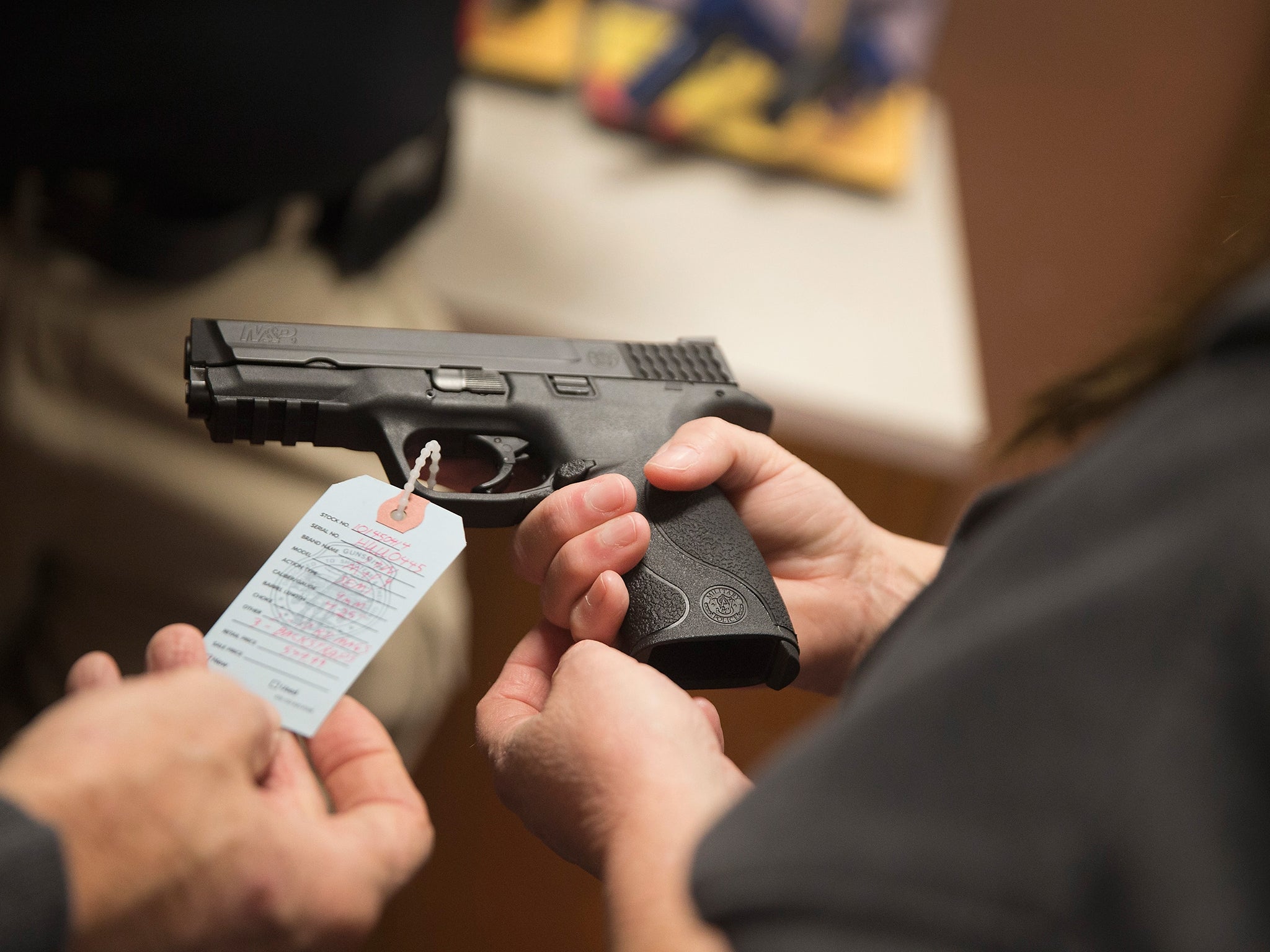After San Bernardino, remembering the unusual motive behind America's first mass shooting
In many ways, the 1949 incident mirrors those that have come in its wake — but in one way it is strikingly different

More than 60 years ago, a man took a stroll with a 9mm pistol. It was Labor Day, and Howard Unruh had been pushed over the edge. So he killed 13 people, and wounded three others, making victims of people at his local barbershop, tailor shop, and pharmacy, as well as a nearby house.
The killing spree, known as the "Walk of Death," is often referred to as the first mass shooting, not because no one had taken the lives of many victims before, but because the term is somewhat malleable, and, as a result, has become tightly linked to the modern day forms of mass aggression.
"While the terminology is a bit fungible, Unruh is generally regarded as the first of the “lone wolf” type of modern mass murderers, the template for the school and workplace shooters who have dominated the coverage of the more than 1,000 victims since 2013," Patrick Sauer wrote earlier this month in a fascinating deep dive on Smithsonian.com.
In many ways, the 1949 incident does seem to mirror those that have come in its wake—a troubled individual, with access to a gun, acts on festering feelings of rage. But in at least one way, it's strikingly different: the apparent motive. Unlike the mass shootings in recent years, which appear to have been caused or provoked by broader political issues (such as the Charleston shooting earlier this year, and the Planned Parenthood attack last month), Unruh's outrage was the result of something seemingly more immediate and personal. His intention was never to make a point. In fact, it's unclear if Unruh even understood why he did what he did.
In a chilling scene, recounted in Meyer Berger's now famous New York Times coverage of the event on that day (which won him the Pulitzer), Philip Buxton, an assistant city editor at The Camden Evening Courier, thought to call Unruh's number, which was available in the phone book. Incredibly, moments later, he found himself talking to the killer, who was at home fending off fire from police outside. Taken aback, Buxton asked Unruh why he was killing people. Calmly, Unruh replied: "I don't know. I can't answer that yet. I'll have to talk to you later. I'm too busy now," before hanging up.
In the aftermath of Unruh's rampage, which ended when police apprehended him at his house, it became clear that he wasn't a terribly happy person. He was "angry at the world," a psychiatrist wrote of him, according to Sauer. His rage manifested itself in various ways, but mostly in a frustration with mundane, every day interactions. He took issue with those around him: his neighbors, with whom he had disputes, local businessmen, who he thought were ripping him off, others he saw every day, and a date who reportedly stood him up the night before.
Much of this temperamental behavior, those close to him said, including his mother and brother, surfaced after Unruh served time in the Army in 1942. And shortly after being arrested, he was moved to a psychiatric hospital, where he spent the next 60 years. He never faced a trial because he was diagnosed with "dementia praecox, mixed type, with pronounced catatonic and paranoid coloring," and declared paranoid schizophrenic. He died in 1999, at the age of 88.
What's interesting about Unruh is how frequently his story is overlooked. A New York Times piece published in October called the 1966 incident, when Charles Whitman killed 16 people at the University of Texas at Austin, the "episode" that "introduced the nation to the idea of mass murder in a public space." That though, of course, was nearly twenty years after Unruh's killing spree, which was widely publicized at the time.
Unruh's incident might have faded away simply because of the timing. In 1949, that sort of violence was rare—it was uncharacteristic. "Unruh’s killings were seen as a weird aberration and not something the culture was obsessed by, so he didn’t immediately enter into a larger American mythology,” Harold Schechter, an author who has written about infamous murderers dating back two hundred years, told Smithsonian in October.
But it's also possible that it isn't talked about, and didn't appear to spur reactive streams of violence, because of the nature of Unruh's motives. He was considered mentally unstable, which might very well be true of those who have perpetrated more recent acts of mass violence. But missing from them was the sort of connectedness to a more collective form of unrest, which seems to have linked recent incidents, even if only in theory. There was no adopted point to the killings, let alone any discernible point at all. And without one, a shooting becomes less of a sign of the times, or a call to arms—which, some doctors believe, can create a domino effect—than an isolated story, albeit an equally devastating one.
© Washington Post
Join our commenting forum
Join thought-provoking conversations, follow other Independent readers and see their replies
Comments